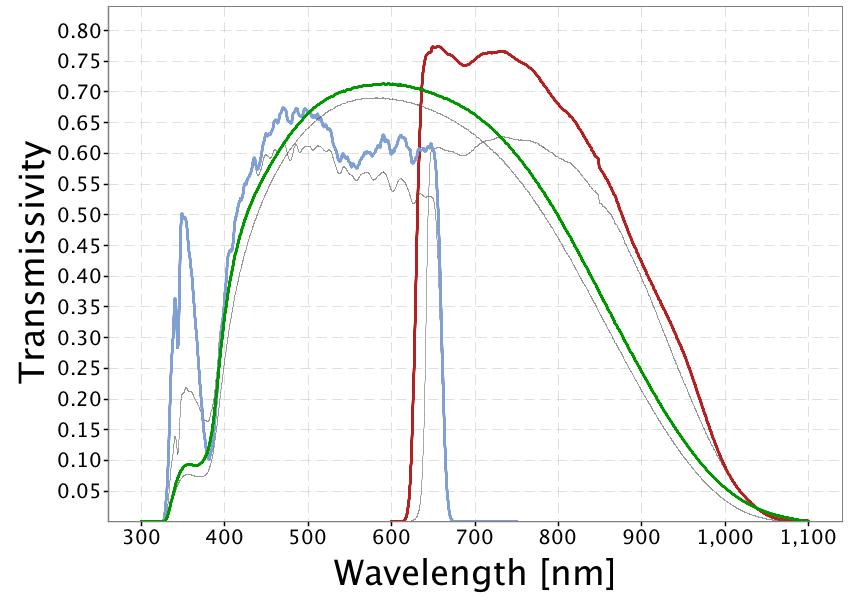Stellar Populations
The distinction between these two population dates to Baade 1944, and while it captures some key features of Galactic stellar populations and the terminology is still in use, it is often possible to be more precise.
- Population III: these are hypothetical stars that have not yet been observed, formed by metal-free primordial gas composed only of hydrogen and helium (and maybe traces of Li and Be) synthesized during the Big Bang. These stars should exist, but so far they are out of reach for our telescopes. JWST may be able to see the integrated light of populations of these primordial stars.
Observational color-magnitude diagram
To study a population of stars we can. use the observational color-magnitude diagram (CMD), which is interpreted through the lens of theoretical Hertzsprung-Russell diagram (HRD).
Gaia DR2 color magnitude diagram, containing about ~1.3 billion Galactic stars. Only ~4.2 millions are plotted here (because of data quality cuts).
Q: Where would the sun be and why?
Observational color-magnitude diagram
The left y-axis is the absolute magnitude in the G band of the telescope on
board of the Gaia space-craft. The bottom x-axis is the color index, obtained as the difference in flux between two filters of the Gaia telescope Bp-Rp.
Other color indexes can be as difference between the flux in different bands (i.e.,
different photometric filters, e.g. B-V)
Navigating the CMD

Main Sequence (MS) core-hydrogen burning phase
Turnoff Point (TO): The time at which the star departs the MS.
Sub-Giant Branch (SGB):shell-burning hydrogen phase from TO to the Hayashi line
Blue Stragglers (BS): stars hotter and more blue than expected, emulating a younger population possibly from a merger
Navigating the CMD

Red Giant Branch (RGB): shell-burning hydrogen phase along the Hayashi line until helium ignition
Horizontal Branch (HB): core helium burning phase
Asymptotic Giant Branch (AGB): shell hydrogen and shell helium burning phase
Post-AGB Branch (P-AGB): final evolution from AGB to WD phase
Hertzsprung-Russell (HR) Diagram
Theorist's HR Diagram: Y-axis is usually express power in terms of luminosity while the X-axis would be effective temperature (
The relationship between luminosity and effective temperature is given by the following equation:
where
Hertzsprung-Russell (HR) Diagram

What's so main about this sequence?
Star has reached the main-sequence if:
- chemically homogeneous with identical or very similar compositions
- hydrostatic and thermal balance
- energy is derived solely from nuclear burning
An illustrative Hertzsprung-Russell for a set of single star stellar models from Iben 1991.
Q - Which number here corresponds to the MS, why does it move?
Isochrones and CMDs

- theoretical stellar models of stars of varying mass but similar composition at fixed points in time. Isochrones are great for studying stellar populations such as those in globular clusters.
Note - this is a theoretical population of stars of various mass, similar composition, born roughly at the same time - see this paper.
Spectral types and relation to color
A spectrum is what one obtains by taking a source of light and decomposing it in its various frequencies (e.g., with a prism, or grating – Pink Floyd)
This can be done in any wavelength range, for example, X-ray spectroscopy is an important tool to study binaries with compact objects such as neutron stars and black holes.
Dark Side of the Moon
Image Credit & Copyright: Harvest / Capitol.
Spectral types and relation to color
For ground-based observatories that is the "optical" spectrum in the wavelength range that can penetrate the Earth's atmosphere, roughly between
Spectral types and relation to color
Kirchhof and Bunsen realized that filtering (white) light through ararefied gas before taking its spectrum would produce absorption lines, i.e. there would be regions of wavelength where light was missing, and these could be used to identify which gas was filtering the light.
Spectrum of the Sun from the /Fourier Transform Spectrometer at McMath-Pierce Solar Facility at the National Solar Observatory on Kitt Peak
Spectral types and relation to color
At zeroth-order approximation, a star is a black-body with the characteristic spectrum,
where
speed of light, and the flux only depends on the temperature
One can also rewrite this in terms of frequency using
Spectral types and relation to color

The temperature appearing here is by definition the "effective temperature", that is the temperature of an ideal black body producing the same Flux as the star.
Relation with colors
Depending on
This in turn means that the change in
Relation with colors

- color index the difference in flux between different photometric bands.
Each band probes a different wavelength region, and the difference between two bands probes the slope of the continuum, which depends only on the effective temperature.
In-Class Assignment 1
In class: Work on ICA here with partner, I will ask one or two people to share and describe plots at the end of class.
After Class: End of day today, August 28, 2025
- Submit as a PDF, preferrably using
nbconvertto D2L, the progress you have made.
ICAs are not always designged to be completed but rather worked on in class, submit what you have when you leave the class even if you did not make much progress.